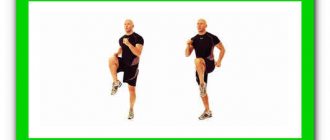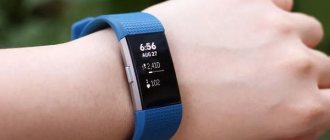Many articles have been written about the benefits of walking. It is usually talked about as a means to improve health and lose weight. Today we’ll try to figure out if all this is true. But let's say it right away. The article is for informational purposes and talks about general provisions. It is better to choose a method for losing weight with a specialist, because each patient’s case is unique. The Doctor Bormental clinic uses its own patented method of losing weight and maintaining results, with the help of which more than half a million people have already lost weight. Read more about her here -.
Benefits and Benefits of Walking for Weight Loss
Walking is a simple form of physical activity that is accessible to everyone. It is classified as low-intensity aerobic exercise. While walking, your heart rate increases only slightly or does not go beyond normal limits at all. This type of exercise is useful not only for weight loss, but for improving the health of the body.
Relatively recently, two young specialists from an English university conducted a meta-analysis. In their work, they compiled and analyzed a wealth of scientific data related to walking from 1970 to 2007. In total, about 4,300 research papers passed through them. 18 of them were particularly large and were based on studies of almost half a million patients. Based on the results of data analysis, they established two key patterns:
- regular leisurely walks, at least half an hour daily, reduce the risk of cardiovascular diseases to;
- The risk of mortality from cardiovascular diseases in people who regularly walk is reduced by 32%.
The data obtained became a real discovery in the world of evidence-based medicine. But that is not all. Other positive effects on the body have been identified and proven:
- Strengthening the respiratory system.
- Increased endurance.
- Strengthening the body's defense reactions. It is better resistant to pathogenic bacteria and viruses.
- Strengthening muscles. The back, buttocks, and thighs are especially strongly involved.
- Stabilization of the psycho-emotional state.
- Reducing anxiety, insomnia.
- Normalization of blood pressure.
It is not necessary to walk for many hours. How long should the walk last? How to prepare for it? What uniform should I wear? Let's talk in more detail in other sections of the article.
How much weight can you lose by walking?
You can lose an unlimited number of kilograms from walking. The amount of fat lost depends on the individual characteristics of the body. That is, weight loss is observed until the moment when the body itself considers it necessary to stop losing weight. This happens when a weight loss threshold is reached. If a person continues to lose weight, they are considered to have a disease or pathological weight loss.
It is important to study at the same time. The greatest benefits from walking can be achieved if physical activity is performed at the same time, since the body gets used to such a daily routine, the metabolism is activated exactly at a certain time: the transmission of nerve impulses accelerates, hormones are released, the work of the cardiovascular system is enhanced, brain, etc.
How to prepare for a walk?
How to practice walking to get maximum benefits? The first thing is to prepare properly. Preparation consists of several main points.
- Clothes should be comfortable, pleasant to the body, convenient, and not restrict movement. It is important to choose clothes according to the weather. In summer - a light cotton set. In winter - thermal underwear, boots, jacket, hat, scarf, gloves.
- The shoes chosen are comfortable, reliable, convenient, warm, if we are talking about a winter walk, with reliable protection from moisture. Experts recommend walking in orthopedic boots or purchasing special insoles that reduce the load on the joints and spine.
- You need to prepare auxiliary equipment depending on the situation - a belt bag for house and phone keys, a backpack, sunglasses, a hat, an umbrella, a raincoat, water. In general, something that will make the walk comfortable and enjoyable.
Also, don't forget about the skin. In summer it is better to apply sunscreen, and in winter - a nourishing, oily one to protect your face and hands from the negative effects of frost, precipitation, and wind.
Running, cycling or walking
The effectiveness of these methods depends on the intensity and duration of the training. So intense interval walking, moving on an inclined surface or with weights are not inferior to running (read about running for weight loss) or cycling. And in combination with other exercises they even surpass them.
The undoubted advantage of walking is its accessibility, including financial accessibility. Anyone can do it, regardless of their level of physical fitness or age. But, although such activities are extremely simple and accessible, there are contraindications to them (intense interval walking, walking on an inclined surface or with weights). At the same time, cycling or running have many more health restrictions and are considered quite traumatic. In addition, they require special equipment and conditions (stadium, bike path, etc.), whereas for walking you only need suitable sneakers.
Walking for weight loss. The right approach
A leisurely walk will be beneficial for the whole body if it brings pleasure. Simply clocking up kilometers will not improve your psycho-emotional state in any way. On the contrary, such a test will forever discourage the desire to walk. Therefore, even in this simple version of physical activity, it is recommended to adhere to certain rules and principles. Let's look at the most important of them.

Count calories
The main principle of weight loss is creating a calorie deficit. Walking will not help you lose weight if your daily intake is many times higher than normal. To burn the calories received from food, you will have to walk many kilometers:
- hamburger - at least 4 kilometers;
- a small can of cola (330 ml) - almost 2 km;
- French fries - 6 km;
- Snickers - 3 km;
- pizza - 5 km;
- cake - 7 km.
But this is only a small part of the food that you can eat in a day. To really lose weight from walking with the same diet, you will have to walk about 20-25 km daily. And this is a 4-5 hour walk. Not everyone can withstand that much.
Increase your speed gradually
One of the questions that worries people is what is more effective: running or walking for losing weight? Each method has certain advantages and disadvantages. While leisurely walking is recommended for almost everyone, running has a fairly wide list of contraindications. For example, overweight people are not recommended to run. This can lead to injuries to the joints, spine, and problems with the cardiovascular, respiratory, and support systems.
A brisk walk is another matter. The main thing is to increase the speed gradually, as you get used to it. For the first few weeks, walk at your usual rhythm, and then move on to Nordic or interval walking.
Recommended Products
To lose weight while staying healthy, you need to maintain a calorie deficit. But this does not mean that you will have to starve yourself by following radical diets. Every day the body needs nutrients, proteins, fats, carbohydrates, vitamins, minerals. They get them from food. Therefore, it is recommended to include the following products in your diet:
- vegetables;
- fruits;
- lean meats;
- fish;
- fermented milk products;
- low fat curd cheese;
- wholemeal bread;
- cereals, cereals;
- mushrooms.
It is recommended to make the menu for every day varied, tasty, and nutritious. The main thing is to maintain the calorie norm, and do not forget about the ratio of proteins, fats, and carbohydrates.
Tone your body
When walking, it is recommended to monitor your body position. It should be in good shape, a little tense. Then you will be able to use the maximum number of muscles, turning an ordinary leisurely walk into an intense workout:
- Bend your elbows and move them actively to the rhythm of walking. That is why it is recommended to put personal belongings in a belt bag or backpack so that nothing interferes with movement.
- Keep your back straight, don't slouch your shoulders.
- Try to pull in your stomach a little, tighten your abdominal muscles.
- Watch your breathing. It should be calm, measured, without shortness of breath.
Such simple tips will help you use your muscles as much as possible and get the benefits of walking.
How much water to drink
Drink water in small sips as needed. Drinks should not contain sugar, caffeine, dyes, or preservatives.
Throughout the day, it is necessary to monitor the amount of drinking water consumed and adhere to the norm. Doctors recommend determining your individual daily water intake at the rate of 30 ml per kilogram of weight.
It is recommended to eliminate or minimize alcohol consumption. It has quite a lot of calories. It is better to direct them to healthy, nutritious, vitamin-rich foods.
Nutrition and sleep
No amount of physical exercise will allow you to lose weight if there is an excessive intake of calories into the body. You can calculate your daily calorie intake using an online calculator. Those who want to lose excess weight need to reconsider their diet and keep a strict count of the foods consumed per day. At the same time, it is forbidden to starve and overeat, since this will not only not lead to the desired result, but will also harm your health.
Walking exercises for weight loss will be effective only if they are regular and follow proper nutrition. The body must satisfy energy needs by burning fat deposits.
In the morning, it is advisable to eat 30-40 minutes before the start of training (a small meal of light food, for example, a diet shake). It is not recommended to eat food 1.5-2 hours before evening training. You can eat in 20-30 minutes. after finishing classes. At this time, the “protein-carbohydrate window” is activated, when foods are absorbed best.
| Prohibited Products | Allowed food |
| Quickly digestible carbohydrates (sweets, chocolates, bars, snacks, corn flakes) | Slowly digestible carbohydrates (buckwheat, pearl barley, oatmeal, rice, millet porridge) |
| Sweet carbonated drinks | Mineral water |
| Fatty meats | Lean meat (especially chicken) |
| Fatty fish | Low-fat fish and seafood |
| Flour | Products made from peeled flour |
| Fat cheese, sour cream and other dairy products | Low-fat cottage cheese, cheeses, milk, sour cream, etc. |
| Alcoholic drinks | Fruits and vegetables, beans |
| Caffeinated drinks | Tea without sugar |
During sleep, damaged tissues are restored, muscle fibers grow, energy reserves are replenished, digestion is enhanced, and the nervous system rests. It is recommended to sleep at least 7 hours a day, but no more than 9-10.
How many calories can you burn if you walk?
The number of calories burned depends on body weight, duration of the walk, and step speed. On average, in 30 minutes you can walk 2-3 km and burn 100-150 kcal. Much depends on physical fitness and age. For example, a woman or man under the age of 40, when metabolic processes are not yet slowed down, will be able to lose weight faster than representatives of the older generation. Below is a table showing approximate values.
| Speed, km/h | Number of calories burned per hour depending on body weight in kg | |||||
| Up to 55 | Up to 65 | Up to 75 | Up to 85 | Up to 95 | Up to 100 | |
| 2 | 78 | 132 | 156 | 168 | 180 | 240 |
| 3 | 120 | 162 | 192 | 210 | 228 | 270 |
| 4 | 180 | 198 | 228 | 252 | 270 | 300 |
| 5 | 240 | 282 | 288 | 318 | 342 | 402 |
| 6 | 270 | 312 | 336 | 384 | 420 | 420 |
These figures are approximate and may vary depending on age, percentage of body fat and muscle. A fitness bracelet will be a useful gadget for hiking. It automatically calculates the number of steps, mileage, and calories burned.
Applications for Android and iOS
Special programs for gadgets will help make training easier, more interesting and effective. Among them:
- Endomondo Sports Tracker . Allows you to accurately calculate location, movement speed, distance traveled and energy consumption. A plus is the ability to view statistics, set goals and results of other users;
- CardioTrainer for Android. Has all the features of the previous program, plus allows you to see a breakdown of speed relative to distance traveled. The calorie counting interface is interesting;
- Spring. An interesting application that not only tracks physical activity and route, but also, thanks to a special playlist, allows you to set the rhythm of movement.
How much and how to walk?
Walking has a positive effect on the entire body. And it doesn’t matter when to go for a walk.
- Morning walking energizes you for the whole day, helps you cheer up and wake up. You can walk to work or school, for example.
- Daytime helps get rid of unnecessary thoughts, tidy up the mind, and increase concentration.
- Evening relieves stress, tension, and fights insomnia.
But experts do not recommend walking in hot or extreme cold. You should refrain from walking during periods of illness.
To generally strengthen the body, it is enough to walk 20-30 minutes daily. Gradually increase the duration to 40-60 minutes. Ideally, take walks daily or 4-5 times weekly.
Warm-up
It’s right to start your walk by warming up your joints. It will reduce the risk of joint and spine injuries and make walking pleasant and comfortable.
Warm-up should take about 3-5 minutes. Do the following exercises:
- Head tilts. Forward, backward, left, right.
- Rotations in the shoulder and elbow joints.
- Bend the torso forward.
- Knee rotations.
- Jumping in place (10-15 times).
- Lunges forward.
These exercises are quite enough to warm up and prepare the body for a walk.
Walking technique
The walking technique is quite simple and understandable to many. It does not have any special nuances or features. But there are a few rules to remember. They will help avoid injuries and various health problems:
- Do not walk immediately after a heavy meal. It is optimal to go for a walk after an hour and a half.
- Carefully walk up the stairs, placing your foot completely on the step. Pay special attention to your technique during intense, fast walks.
- Do not accelerate suddenly, increase the pace gradually, minute by minute. Don't stop quickly either. First, switch from fast walking to slow walking, restore your breathing.
- Remember the correct breathing technique. Inhale through your nose, exhale through your mouth.
The main thing is to monitor your well-being throughout the workout, listen to your own body and sensations. Shortness of breath, cramps, pain in the joints or spine - all these are alarming signals indicating that the pace of the exercise is incorrect and the body cannot cope with the stress.
conclusions
It is worth considering that walking, hiking or simply active movement - this should become an important component of the life of any person. A sedentary lifestyle not only leads to obesity and excess weight, but also leads to health problems. Heart function worsens, blood pressure increases, insomnia, irritation, and nervous breakdowns appear. In this case, self-esteem also deteriorates.
Daily walks in the fresh air will help tone your body and develop leg muscles. Gain physical endurance. You can test yourself before starting training and after a month. To do this you need to climb a certain number of floors. This will not be easy for a beginner. Shortness of breath and weakness in the body appear. If the training cycle is not disrupted, then after a few weeks the distance to climb the floors will be easy, without problems with breathing or other factors.
But don’t forget to be active throughout the day. Constantly force yourself to walk, move between floors without the help of elevators, and do not use escalators in supermarkets and subways. At the same time, your weight will begin to drop sharply, your body will become elastic, toned, and your health will improve.
Motivation
Health and wellness are the main sources of motivation. You shouldn’t hope for miraculous, quick weight loss. It will not be possible to lose tens of kilograms in a month, and all the enthusiasm will fade away, because the number on the scale will remain at the same level.
When going for a walk, you should remember how positively it affects the body and all its systems. Experts recommend keeping a diary and indicating in it the duration of the walk, briefly recording feelings and thoughts.
It is also recommended to develop a reward system. Give yourself a gift for completing a certain plan. It could be a book, a new dress, cosmetics - anything that brings joy.
Calculation of the number of steps per day for weight loss
Experienced fitness instructors and nutritionists always recommend creating a personal program based on individual indicators and a person’s health status.
You can calculate the required number of steps yourself. You need to go to the sports ground, where there are markings. Walk a hundred meters while simultaneously counting the number of steps you take. Then divide the number 100 (distance traveled) by the number of steps taken. The result obtained is the individual step length.
Be sure to read: How to exercise correctly in the gym to lose weight without a trainer: the best exercises, how to create a program
For example: 100 (meters):125 steps =0.8 m
The average step length of an adult is 0.65-0.8 m. Thus, after walking 1000 meters, a person will take 1250-1600 steps. To lose one kilogram every month, you need to walk 5 kilometers or take 6,250 steps a day.
Calculating an individual rate manually is not always convenient. To determine a personal weight loss plan, there are many different phone applications and calculators. Sports stores sell special watches with a pedometer and other useful functions.
Types of walking

Walking has several different types. It is classified according to the duration of the lesson, the location, and the use of certain equipment, for example, treadmills. Currently, the following types are especially popular:
- Scandinavian - with special poles similar to ski poles (sold in sporting goods stores).
- Sports. More suitable for people with good physical shape. May be a transitional stage from walking to jogging.
- On the stairs. Uses the thigh muscles well and strengthens them. Can be part of a regular walking workout.
- Long lasting. Ideal for clearing thoughts, calming, and combating nervous tension. It is especially good to walk with company, friends, children or good music.
- Interval. It involves alternating certain time periods of different intensity. Suitable for people who are tired from ordinary walks.
- On the spot. Can be used in cases where there is no time or desire to go outside. Walk around the room or on a treadmill.
- Uphill on a treadmill. A more complicated version of walking in place is on an incline on a treadmill. Actively engages the muscles of the thighs, buttocks, and torso.
Let's take a closer look at each type.
Scandinavian
Nordic walking with poles is suitable for people of all ages, with different levels of physical activity. During training, all muscle groups are actively involved: hips, buttocks, back, arms. In this case, the cells are actively saturated with oxygen. As a result:
- Strengthening muscles reduces pain in the back and lower back. This is especially important for people who lead a sedentary lifestyle.
- Acceleration of metabolic processes.
- Reducing stress and tension levels.
- General improvement in well-being.
- Normalization of blood pressure.
The main thing is to strictly follow the technique and keep the body in the correct position. Therefore, experts recommend conducting the first classes with the support of a trainer.
Sports
Race walking is quite intense. This is a transitional stage from walking to leisurely jogging. Like other types, it improves overall well-being and normalizes the functioning of all body systems.
The general principles of this type are as follows:
- High intensity - up to 200 steps per minute.
- Small steps, less than usual, about 80-90 centimeters.
- One leg is always on the ground, and when moving it does not bend at the knee, it always remains straight.
- Quick hand movements.
Race walking is a fairly complex and intense activity that is definitely not suitable for a beginner. Learning the technique can take a long time. They switch to it as endurance increases. If you are physically fit, you can use a bicycle instead.
On the stairs
Walking on stairs is much more active than other types. Allows you to work out the muscles of the thighs and buttocks as much as possible. Helps strengthen the muscular corset of the body, improves gait and posture. You don't have to spend the entire hour jumping up and down the steps. Eliminating the elevator, for example, will make a regular walk much more efficient.
Long walk
Long leisurely walks have a positive effect on the psycho-emotional state, calm you down, relieve tension and stress. There’s no need to put in the kilometers on purpose. This will kill the desire to walk for the next few days, turning walking into an exhausting workout that does not bring any pleasure.
An alternative is to walk from work, do a few circles around the house, go to the store, or take a walk with your child to the park.
Interval walking
As the name suggests, interval walking involves alternating between specific intervals. An approximate diagram might look like this: First, warm up a little, walk for 5-7 minutes at a comfortable pace. For the next 1-2 minutes, speed up a little, but so that your breathing does not stop. Walk for a minute at maximum pace. Reduce speed slightly and walk for another 1-2 minutes. Go into leisurely 5-minute steps. Repeat 2-3 rounds.
It is believed that interval walking is the best way to help you lose weight. But there are no reliable studies on this issue to date.
On the spot
Walking in place is suitable for those who do not have time to go for walks in the park, in the city, etc. Usually the lesson is carried out on a treadmill, on which a comfortable speed and duration of the lesson are set. This option will allow you to burn some calories. But you won’t be able to relax or get distracted. Often people combine treadmill training with watching videos, but this is not as beneficial as contemplating nature while walking in the park.
Walking on a treadmill can be used as a way to warm up before working out at the gym.
Uphill or incline on a treadmill
A more challenging option is walking on an incline treadmill. This surface simulates an uphill climb. Working out on an incline machine is quite difficult, the muscles quickly get tired and begin to ache. But you can combine incline walking with simple walking in place or use it as a short warm-up before training in the gym.
Walking with weight
Weights for arms and legs weighing 0.5-1 kg can be used as additional weight when walking. This will diversify your workouts, make them more effective, and allow you to burn a little more calories by actively engaging all the muscles of the body.
Tips for beginners
Anyone can practice walking to lose weight: both a pensioner and a very overweight person. This is the most affordable way to lose weight of all known. But before starting training, it is recommended that you read the information below.
How long to walk
The walk can last for an unlimited time. There is no upper limit on duration or distance: travel as many kilometers as you feel necessary. The main thing is not to overdo it. Classes begin with hikes over shorter distances, then gradually lengthen them. The body itself will tell you when you need to increase the duration of your workouts.

For an untrained person, a speed of 3-4 km per hour or walking in place at his usual pace is sufficient to achieve the effect. More trained persons or representatives of physical labor can move at a speed of 6-8 km/h.
If you experience discomfort, pain, severe palpitations or shortness of breath, it is recommended to stop any physical activity. If the condition does not improve after this, you should seek medical help.
To “start” fat burning processes, you need to walk for at least an hour a day. In 30-40 minutes, the body, in order to meet increased energy needs, will be forced to switch to breaking down fat reserves.
Accordingly, already at the initial stage of training, about half an hour will be allocated for burning fat, which will allow you to effectively fight excess weight.
Over time, as opportunities grow, walks can be increased. You also need to gradually increase the pace of movements. You yourself will feel the need to increase the duration and intensity of your studies, which will be expressed in an ever-increasing desire to go further, which will be increasingly difficult to resist. The need to increase the intensity and time of training will be indicated by the ease of tolerance of previous loads, the feeling that not everything has been accomplished and there is an opportunity to do more.
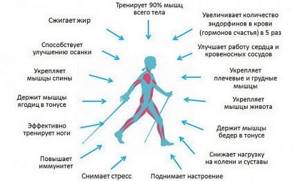
If you want to burn more calories, it is advisable that walking becomes a part of your life: walking to the store, place of work, amusement park, restaurant, cinema, etc.
We provide you with an approximate walking program for a month to burn calories. The given program is an example - it is not necessary to repeat it completely. All training must be individualized. The intensity of the exercise should be adjusted in accordance with the reaction and needs of the body.
Week 1:
- Day 1. Slow walking for 30-40 minutes (the day is considered a preparatory day; based on its results, the ability to train further is assessed).
- Day 2: Walk slowly for an hour.
- Day 3. Slow walk 1-1.5 hours.
- Day 4. Workout at a moderate pace for about half an hour (the possibility of increasing the load is considered).
- Day 5. Moderate walking pace for 1-1.5 hours with rest breaks.
- Day 6. Walk at a moderate pace for 1.5-2 hours with breaks.
- Day 7. Rest or walk at a slow pace.
Week 2:
- Day 1. Walking at a moderate pace for at least 1 hour (then walking should be at least 1 hour per workout), performing breathing exercises.
- Day 2. Walk with interval walking + breathing exercises.
- Day 3. Interval training with breathing and light physical exercise (jumping, squats, etc.).
- Day 4. Walk at a high pace of walking + breathing exercises (tolerance of a high pace of walking is assessed).
- Day 5. Training at a moderate pace with free exercises.
- Day 6. High-intensity class + light exercise.
- Day 7. Rest or walk at a moderate pace.
Week 3:
- Day 1. Interval training with strength exercises.
- Day 2. High-intensity walking with light physical exercise (up to half an hour).
- Day 3. Walking at a moderate pace and strength exercises + breathing exercises.
- Day 4. Walk at a high pace with breathing exercises.
- Day 5. Interval walking, strength exercises (10-15 minutes).
- Day 6. High-intensity walk, free exercise.
- Day 7: Rest or walk at a moderate pace.
Week 4:
- Day 1. Interval training with strength and breathing exercises.
- Day 2: High-intensity walk with floor exercises.
- Day 3. Interval walking + strength exercises for at least 30 minutes.
- Day 4: Interval training, free exercise or breathing exercises.
- Day 5. Walk at an intense rhythm with strength training.
- Day 6. Interval walk, free exercises.
- Day 7. Rest or easy walk.
When to go
It is advisable to choose the training time according to individual biorhythms rather than the general population. Although there is an increase in the concentration of hormones in the body in the pre-dawn hours, which is a kind of wake-up signal, not everyone is comfortable waking up early in the morning. A similar picture is observed with going to bed. It is important to take into account the work schedule, since after an active workout it can be difficult to “join” it.
The advantage of morning workouts over evening classes is the speedy transition to the “calorie burning” mode. However, training on an empty stomach is prohibited, although such an approach may seem irrational. Exercising on an empty stomach disrupts the functioning of the gastrointestinal tract and leads to disruption of its physiological rhythm of work. Therefore, before your morning workout, it is advisable to have a light breakfast.
Evening exercises allow you to get rid of negative emotions accumulated during the day, relieve mental and physical stress, and have a beneficial effect on sleep. Their disadvantage is the longer process of “building up”, the need for a more thorough warm-up. Also, the body takes longer to get used to the evening exercise routine. It is important that training takes place no later than 3 hours before bedtime, otherwise you can disrupt biological rhythms and harm the cardiovascular and endocrine systems.
It is highly undesirable to train at lunchtime, since then the greatest solar activity is observed, which negatively affects the body.
Exercising in the heat is especially dangerous, as it leads to severe loss of fluid, puts excessive strain on the heart and respiratory system, and can lead to overheating and other dangerous consequences.
Where to go
It doesn’t matter where the classes take place. You can walk anywhere convenient:
- at home;
- on the staircase;
- on the street (away from the roadway);
- at the stadium;
- in the gym on a treadmill;
- on the bank of a river or lake;
- in the park.
The main condition is the presence of clean air, since heavy gases and impurities from the air entering the lungs impair breathing, additionally load the cardiovascular system, and reduce the effectiveness of training.
Clothes for walking
Proper walking for weight loss begins with choosing clothes and shoes. The latter plays a special role. It must correspond to the size (no squeezing or dangling of the foot), provide fixation of the ankle joint, but not limit movement in it. It is undesirable to wear shoes with completely flat soles, since they do not allow physiological distribution of the load on the foot and lead to compression in the direction from bottom to top. Also, shoes should be soft. It creates the effect of a soft spring - it performs a shock-absorbing function. Otherwise, the risk of developing flat feet, injuries, and increased wear of articular surfaces increases.

Shoes should not be too heavy or light - they need to be felt. It is advisable to use sneakers. They should be changed every 400-450 km, because by this time they have time to wear out and lose their shock-absorbing function.
Clothes should be comfortable: not tight to the body and not hanging. Natural fabrics are recommended because they allow air to pass evenly (the fabric “breathes”) and ensure normal sweat production and evaporation (the body cools naturally). Dark fabrics heat up more, so wearing them in hot weather is not advisable. Light-colored clothing heats up less, so it is more suitable for activities in the warm season. In cold weather, it is recommended to wear hats.
Clothes and shoes must be appropriate for the weather, otherwise training will lead to illness.
Warm-up
Warm-up is a must. It is especially relevant for interval training, walking at a fast pace or on stairs. Loading on unheated muscles leads to excessive damage to their fibers and increases the recovery period. Sudden stress on joints, ligaments and bones can cause severe damage. Without warming up, the likelihood of injury increases by 2-3 times.
You should start the lesson with light breathing exercises, warming up movements in the joints (necessarily in large ones), rotations of the neck and pelvis, squats, and muscle stretching. Everything is like in school physical education classes. Then they move on to slow walking for a short distance, soon increasing the pace. Be sure to monitor your health, breathing and heartbeat. Afterwards, you can rest for up to 5-8 minutes before the main workout. In addition, warming up will allow you to burn more calories.

Walking technique
It is extremely important to know how to walk correctly. Although this seems strange, many people do not know how to walk, which is why exercise will only be harmful to their health.
The correct walking technique is as follows:
- Correct posture. You need to stand straight, do not arch your back or lean forward, otherwise the stress on your feet and spine will increase by 1.5-2 times, which increases damage to bone and cartilage tissue. Correct posture will ensure easy breathing and avoid pain in the legs and back.
- Chin parallel to the ground, gaze straight. This ensures reliable fixation of the cervical spine, which minimizes the likelihood of injury. Looking ahead will allow you to respond in a timely manner to the appearance of an obstacle.
- Shoulders relaxed. They are located freely or slightly retracted posteriorly (depending on the flexibility of the joints). Walking with a tense shoulder girdle causes excessive shock to internal organs.
- The abdomen is tucked, but not tense. This achieves the effect of a pillow - the internal organs are maintained in a physiological position, their shaking is minimized.
The efficiency of burning fat while walking or running increases when you engage your arms. According to various sources, this increases the effectiveness of classes by 4-10%. The limbs are bent at the elbow joints at a right angle. If this technique is too exhausting, you can use your hands for 5-15 minutes until the body gets used to the increasing loads.
- It is forbidden to clench your fists. Clenched fists increase blood pressure, which is highly undesirable. It is recommended to keep your elbows close to your body.
- The feet should be parallel to each other. This will protect the joints from premature wear.
- Walking involves rolling from heel to toe. First, the heel is lowered, then the foot rolls towards the toe. If there is simultaneous contact with the surface of the entire foot, it is worth reviewing the technique or changing shoes.
- The steps are moderate. A step that is too long or short disrupts balance and increases the load on the foot. The repelling limb should be at a greater distance from the body, because the pushing force is placed on it.
- Breathing should be of moderate depth and uniform. Sharp inhalations and exhalations lead to shortness of breath and the training will have to be stopped. The appearance of severe shortness of breath, discomfort or pain in the lungs is a signal to reduce the intensity of training or to stop it.
- The heart rate should not exceed the maximum for a particular age.
- There is a concept of the “fat-burning pulse zone” - the heart rate at which maximum burning of fat reserves is achieved. The “fat burning zone” is considered to be a heart rate corresponding to 60-70% of the maximum safe frequency. The “fat burning zone” can be determined using the formula 220 beats/min. subtract the age in years (get the safe heart rate limit for a specific age) and multiply by resp. percent.
- Walking speed should be increased gradually.
How much water to drink
Replenishment of water and mineral losses is mandatory. Most of the salts dissolved in water are excreted from the body through sweat. In the absence of their supply, problems with the heart and nervous system are observed, and seizures may develop.
You can drink before starting a workout. But a little. Otherwise, breathing is impaired, and the load on the heart and kidneys increases significantly. It is recommended to drink small sips (3-5) during training. Do not drink too much water, otherwise you will have to stop the activity.
After training, it is necessary to restore the water-mineral balance. Freshly squeezed juice or mineral water (preferably without gas) will help. You should not drink a lot of liquid at once. It is better to drink the same amount in short periods of time. For the average person, 0.5 to 1.5 liters of water per workout is enough to replenish fluid loss.
Drinking sports drinks with caffeine is highly discouraged. Because they overload the heart muscle and lead to increased blood pressure.
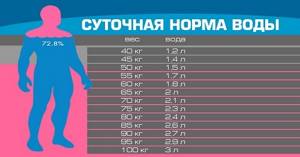
Goal while walking
Each workout should pursue a specific goal, which will make it more effective and make it easier to bear the load. It is recommended to set yourself a small task each time. For example: walk to a certain street, cover 10 km or climb a hill 5 times. This approach will allow you not to miss training, develop resilience and the habit of achieving what you want. Quite quickly, the psyche will get used to the formation of regular tasks, which will allow you to constantly improve your results.
Motivation
Walking is an affordable and completely free way to normalize body weight. The only thing required is desire. Regular exercise will not only help you get rid of fat deposits, but also improve your health, develop strength and endurance. It has been proven that playing sports builds strong-willed qualities, allows you to fight stress, and discover hidden potential. At the very least, it will become a useful hobby. If you walk accompanied by music or audio books, you can significantly expand your worldview.
Joint training allows you to make new acquaintances, motivate each other, and strengthen relationships. It is noted that during joint exercises, load tolerance increases, therefore, productivity increases.

Points You Should Keep in Mind When Walking for Weight Loss
To get your figure in order by walking, you will have to try. But the main thing is not to harm the body. Therefore, it is recommended to follow the basic rules. Keeping your steps consistent and clear will help you maintain momentum throughout the session. At first, count and march. Observe the sensations in your neck and back. There should be no tension, discomfort, or pain. To avoid cramps and discomfort in the leg muscles, it is recommended to do light stretching every half hour. When walking, place your entire foot on the ground.
The main thing is not to get upset if something doesn’t go according to plan. Over time, daily walks will become habitual and will bring only joy.
How many steps do you need to walk per day to lose weight?

A modern person aged 25-39 takes, on average, 5,500 steps per day. How many steps a day should a person take to lose weight? This is a question many people ask when choosing walking as the main method of body shaping.
Most nutritionists and trainers recommend sticking to the norm - 10,000 steps per day. The figure applies more to women and is considered an average. For men, due to their more developed muscles, 8000-9000 steps per day are enough. For those losing weight, this is the optimal goal to strive for.
Beginners should not immediately exhaust their body and practice for hours. A large load for an unprepared person can only bring harm.
Effective preparation should last at least 45-60 minutes. But at first, it is enough to take moderate half-hour walks, eventually accelerating the pace and duration. Each time you need to add up to 500 steps.
After two to three months of regular work, a run of 6-7 kilometers will become an achievable record.
Reviews and results
Feedback from people who walk regularly is very positive. Most note a general improvement in well-being, a decrease in fatigue and irritability. The main thing is to find the ideal scheme. You should not focus on, for example, 5 km or 10 thousand steps. At the initial stage, it’s normal to do half as much, monitor the body’s reaction, and adapt to its needs.
Based on the reviews, you can track the following positive changes:
- Stress levels decrease. Manages to cope better with problems at work and at home.
- Increases efficiency and concentration. This is especially important for people whose work requires concentration.
- Blood pressure is normalized. Positive dynamics are also observed in people with cardiovascular diseases.
It is necessary to find your own type of walking that creates feasible, but at the same time quite intense loads. Then daily walks will become the norm. They will benefit the entire body.
You need to monitor your pulse
During any physical activity, especially when alternating intense exercise with cardio training, you need to monitor your pulse. Heart rate should be normal. This is directly related to adjusted calorie loss.
Having reached an increase in heart rate several times, a person may be unable to continue further movement due to problems with his well-being. The vision will begin to darken and shortness of breath will appear. The pulsator on your hand is very important at this time. It will show the correct value and help you slow down to normalize your heart rate.
In healthy people who do not have heart problems, the pulse when walking should be normal: 120-140 beats per minute. However, they should not feel discomfort. To restore the water balance, which can be disrupted during physical activity, you should drink water or rinse your mouth. There is no need to be diligent about this. For 1 hour of walking, 0.25 liters of purified water is enough. It is important that the liquid does not contain gases or sugar.
Sport equipment
All you need to walk is good shoes and time. There are items that can help make your workout easier and more productive.
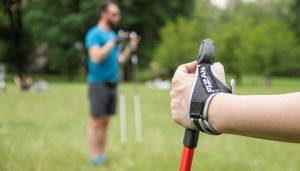
Below is a list of equipment that will help you lose weight:
- Heart Rate Monitor: Helps you monitor your heart rate zone.
- Nordic walking poles: improve gait and posture.
- Pedometer: Counting steps is a good way to keep track of your daily goals and challenge yourself during your workout.
- Dumbbells: Will tone your upper body and raise your heart rate without the need for brisk walking.
- Fitness apps: Activity tracker helps you track distance, time, step rate and heart rate.
Alternate loads
This type of training has low or medium intensity, i.e. if you do it every day, there is no risk of injury, as with high-intensity training.
Doing the same exercises every day can lead to mental fatigue, burnout, and developmental stagnation. For this reason, if losing weight is your main goal, it is recommended to train in zone 2 3-4 times a week.

From time to time, you can alternate aerobic exercise with strength exercises that are shorter in duration. Exercises done in Zones 3, 4, and 5 will help you improve your walking speed, build muscle mass, and burn more calories in a shorter period of time. High intensity workouts can also be ideal on days when you don't have much time.





